Heatherwick Studio’s Sculptural Glasshouse Unfurls into a Crown
Architect Thomas Heatherwick returned to his architectural roots this summer with Glasshouse, a beautiful kinetic structure that slowly unfurls into the shape of a crown. Heatherwick may be best known for his recent large-scale projects, such as the Vessel in New York City’s Hudson Yards, but Glasshouse recalls some of his earliest career-making works, which were often smaller pavilion-sized buildings and follies that moved or transformed in some way. Located on the historic Woolbeding Gardens estate in England, the sculptural greenhouse references the history of ornamental Victorian terrariums.
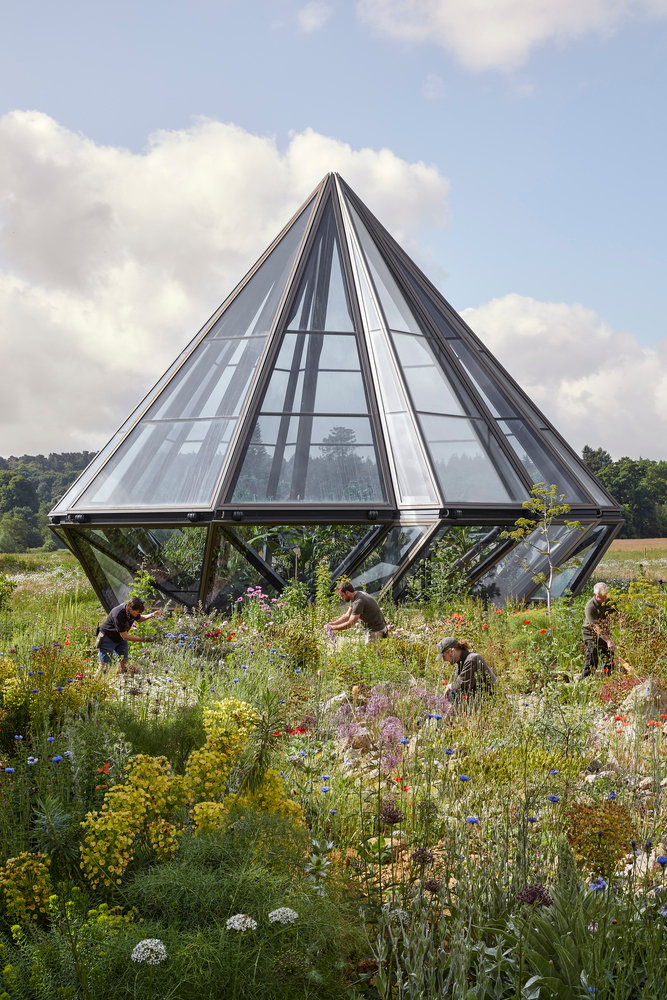
Produced in collaboration with The Woolbeding Charity and the National Trust, Glasshouse acts as a spectacular focal point for a new garden that takes visitors on a 12-step journey through a mock Silk Road. The ancient network of Eurasian trade routes played a central role in cultural, political, and religious interactions between the East and the West, and it still influences the designs of English gardens to this day. Some favorite English garden plants like rosemary, lavender, and fennel were brought to Britain for the first time along this route.

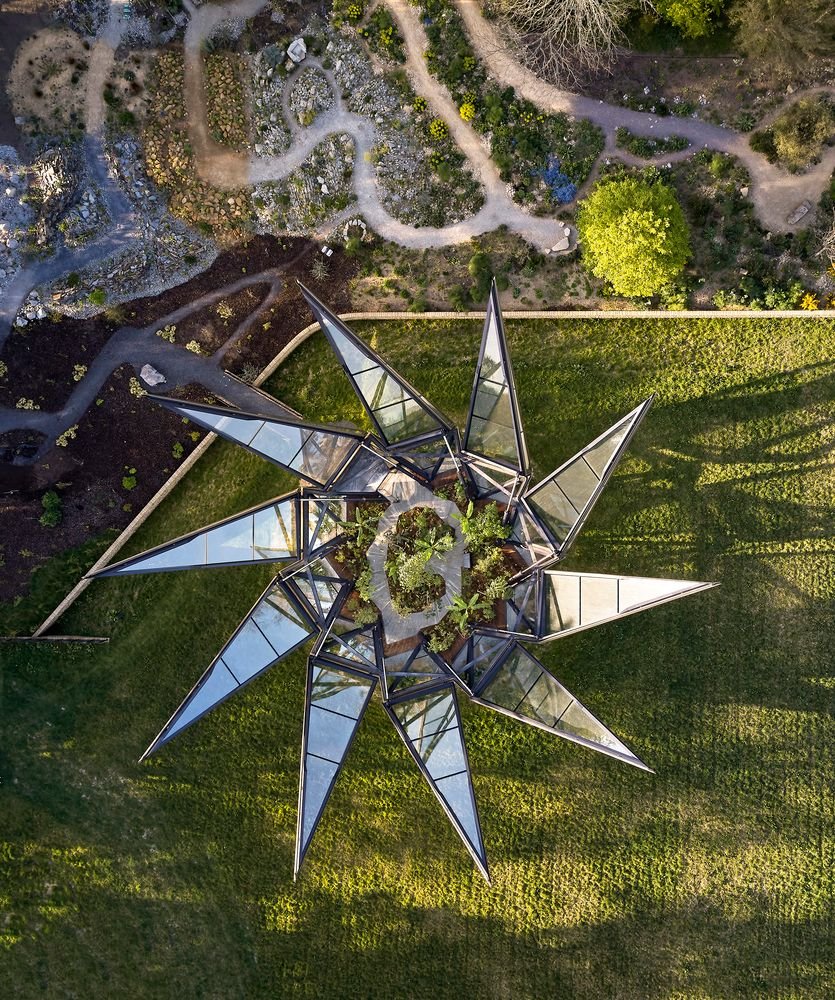
Following the garden path, visitors will discover over 300 plant species across 12 regions of the Silk Road, including Mediterranean evergreens and Gallica roses brought to Europe by traders from Persia. Inside the Glasshouse, they’ll find tropical species like umbrella trees, magnolias, bananas, and a rare Aralia vietnamensis. During colder weather, the structure’s ten steel “sepals” remain closed to protect the plants. When it’s warm, the sepals open using a hydraulic mechanism to provide access to sunlight and ventilation.
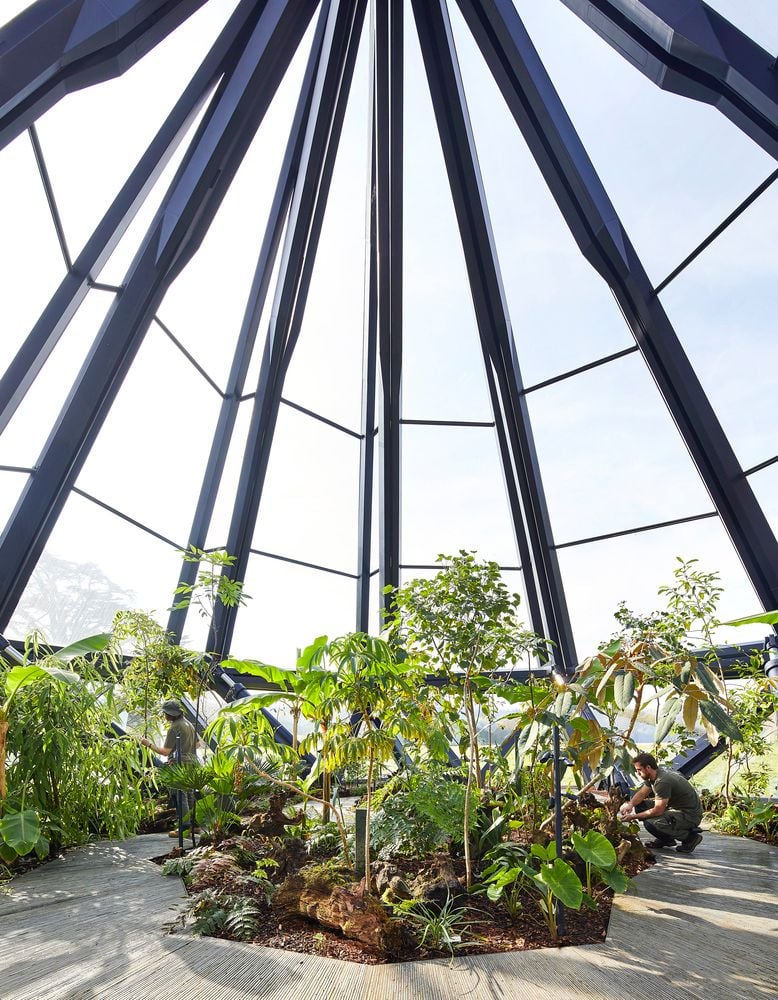
“This is a place and a project that literally unfolds,” says Heatherwick. “You step through this bewitchingly beautiful garden and discover an object that starts like a jewel and ends like a crown as the Glasshouse slowly unfurls. I think it also speaks of our need to keep creating amazing pasts. Weaving contemporary inventions into the fabric of historic settings and having the confidence to let each one speak to the other.”
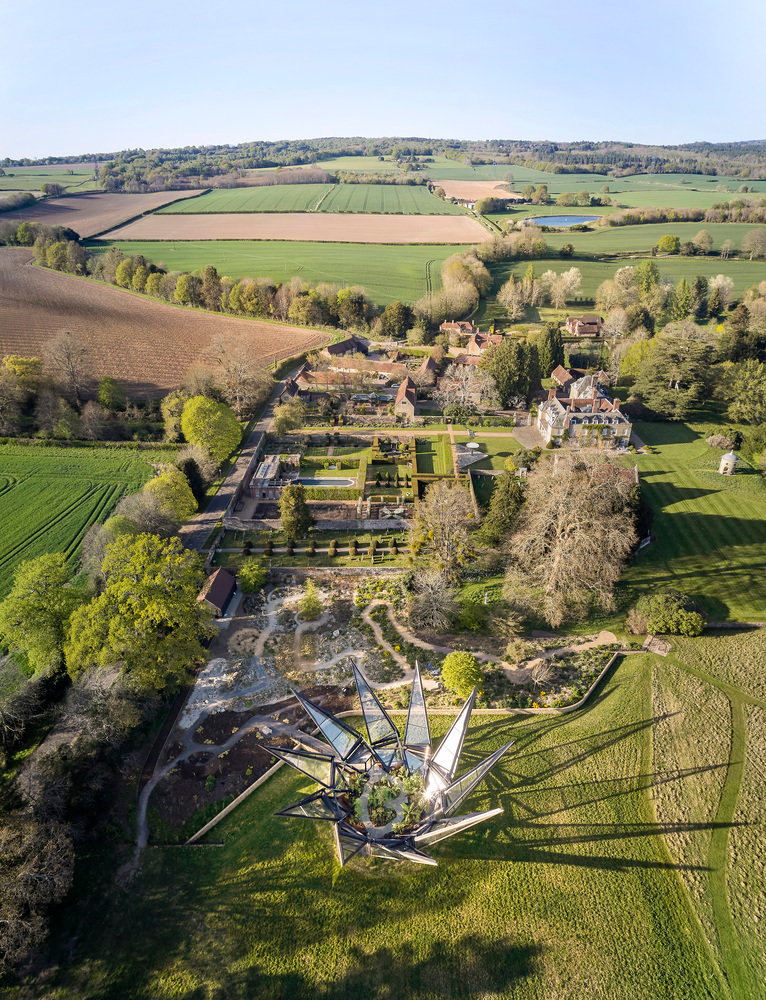

It takes about four minutes for the Glasshouse to fully open, a process that must be a spectacle to behold in person. The structure already looks like a beautiful gem when closed, but once the sepals unfurl and point toward the sky, it catches the sunlight in a whole new way, scattering spiky geometric shadows all over the lawn.
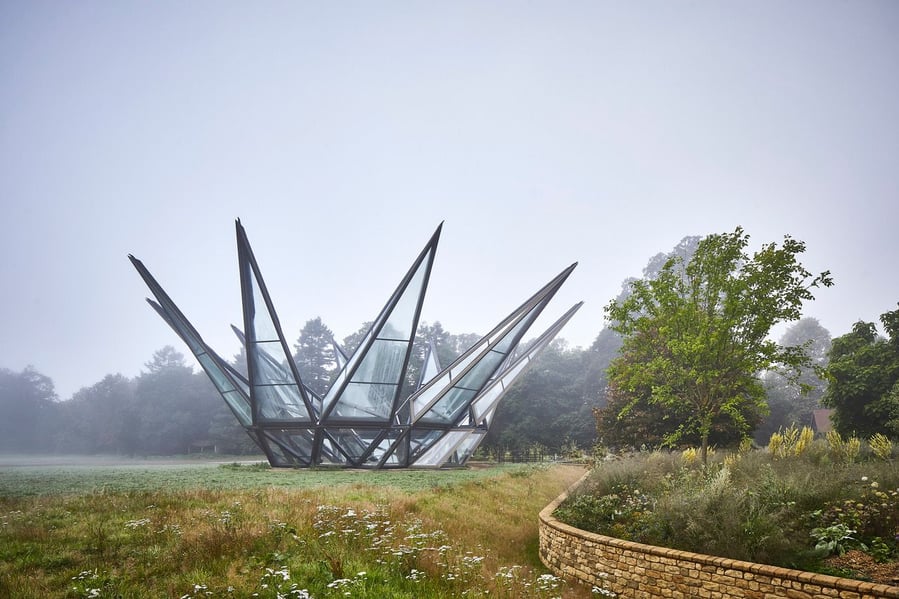
“This Heatherwick Glasshouse represents the cutting edge of technical design and engineering, but it’s also a restoration of something that is part of Woolbeding’s history,” says Mark Woodruff of The Woolbeding Charity. “It stands as a crowning achievement in contemporary design, to house the flora of sub-tropical south-west China at the end of a path retracing the steps along the Silk Route, from temperate Europe and across mountains, arid lands, and high pastures that brought the plants from their native habitat in Asia to come to define much of the richness and glory of gardening in England.”
https://www.youtube.com/watch?v=ChkJ7_3Y4PA
The Woolbeding Glasshouse and Silk Route Garden were created with the help of engineering firm Atelier Ten, MRG Studio landscape architects, moving structure specialist Eadon Consulting Ltd., Bellapart glasshouse engineering design and construction, and others.




